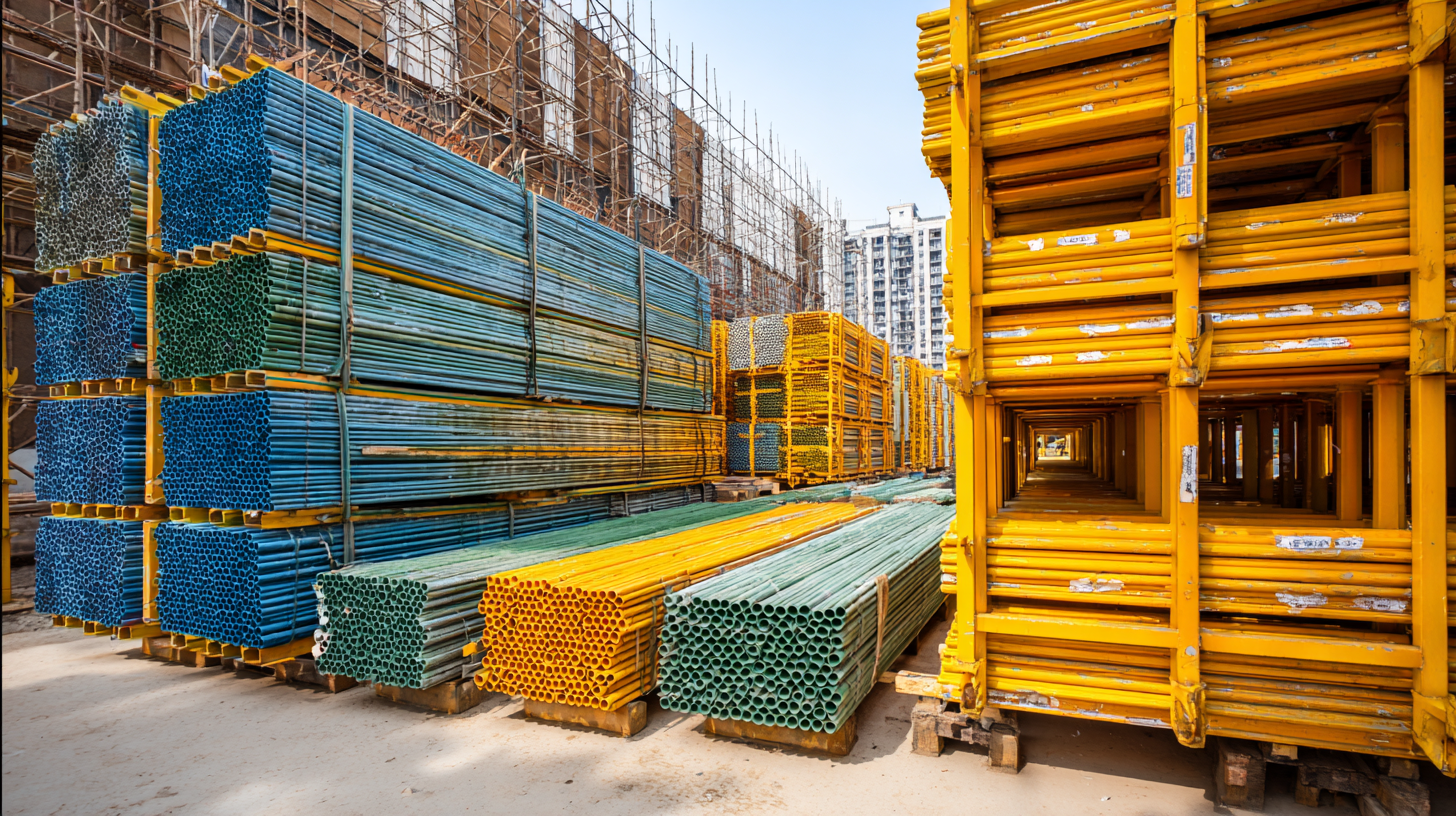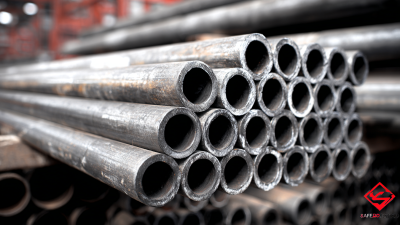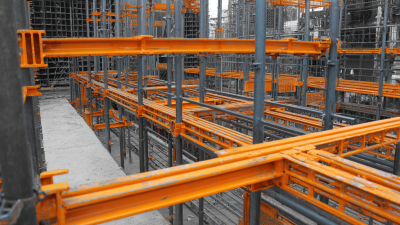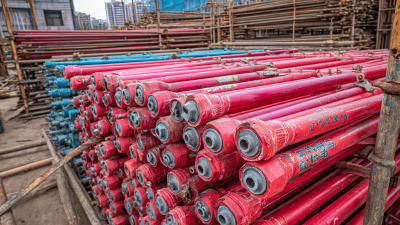 +86 18531741341
+86 18531741341
Leave Your Message
 Choosing the right scaffolding material is a critical decision in the construction industry, influencing both project safety and efficiency. Industry reports indicate that scaffolding accidents account for approximately 50% of all construction-related injuries, underscoring the importance of selecting durable and reliable materials. Various scaffolding materials, such as steel, aluminum, and wood, each offer distinct advantages and limitations, which can significantly affect the overall project cost and timeline. For instance, according to a recent study by the Occupational Safety and Health Administration (OSHA), steel scaffolding is favored for its strength and durability, especially in heavy-duty applications, while aluminum is praised for its lightweight nature and ease of transport. Understanding these materials' properties, costs, and suitable applications is essential for construction professionals aiming to ensure safety and optimize resource allocation in their projects.
Choosing the right scaffolding material is a critical decision in the construction industry, influencing both project safety and efficiency. Industry reports indicate that scaffolding accidents account for approximately 50% of all construction-related injuries, underscoring the importance of selecting durable and reliable materials. Various scaffolding materials, such as steel, aluminum, and wood, each offer distinct advantages and limitations, which can significantly affect the overall project cost and timeline. For instance, according to a recent study by the Occupational Safety and Health Administration (OSHA), steel scaffolding is favored for its strength and durability, especially in heavy-duty applications, while aluminum is praised for its lightweight nature and ease of transport. Understanding these materials' properties, costs, and suitable applications is essential for construction professionals aiming to ensure safety and optimize resource allocation in their projects.
When selecting scaffolding materials for your construction project, it's essential to understand the various types available, each suited to different requirements. Steel scaffolding, for instance, is renowned for its strength and durability, making it a top choice for heavy-duty applications. According to a report by Grand View Research, the global scaffolding market is expected to reach approximately $65 billion by 2025, highlighting the increasing reliance on robust materials like galvanized steel in the industry. Steel's ability to withstand harsh weather conditions further enhances its appeal, making it ideal for both indoor and outdoor projects.
On the other hand, aluminum scaffolding is favored for its lightweight properties, facilitating easier transport and assembly. The same market report indicates that aluminum scaffolding is projected to grow significantly due to its versatility and cost-effectiveness. Moreover, it provides a safe alternative for projects with less extreme load requirements, particularly in residential or commercial settings. Understanding these distinctions in scaffolding materials not only aids in making informed decisions but also ensures that safety standards and project timelines are met effectively.
When selecting scaffolding materials for your construction project, it is crucial to evaluate
the strength and durability requirements
specific to your site and project scope. Different materials, such as wood, steel, and aluminum,
offer varying levels of support, weight capacity, and lifespan under various environmental conditions.
For instance, steel scaffolding is known for its robustness and
is ideal for heavy-duty applications, whereas aluminum scaffolding
is lightweight and easier to maneuver, making it suitable for less demanding projects.
Tip: Before making a decision, assess
the maximum load that the scaffolding will need to support.
This includes the weight of workers, tools, and materials. Ensuring that the selected material can
handle the expected load is vital for safety and efficiency.
Additionally, consider the weather conditions your scaffolding will face. Steel may rust if exposed to moisture,
while treated wood can withstand the elements better but may not hold up under heavy weights.
Tip: It can be beneficial to consult with
experienced professionals or refer to manufacturer specifications to understand the longevity and
maintenance requirements of different materials.
Proper planning in this regard will save time and resources in the long run.
 When selecting scaffolding materials for a construction project, cost-effectiveness is a crucial factor that can significantly impact the overall budget. Various materials, such as steel, aluminum, and timber, each have distinct advantages and drawbacks regarding initial cost, maintenance, and lifespan.
Steel scaffolding, while often more expensive upfront, offers outstanding durability and strength, making it ideal for heavy-duty applications. On the other hand, aluminum scaffolding is typically lighter and easier to assemble, which can reduce labor costs and expedite project timelines, though it may not hold up as well under extreme conditions compared to steel.
When selecting scaffolding materials for a construction project, cost-effectiveness is a crucial factor that can significantly impact the overall budget. Various materials, such as steel, aluminum, and timber, each have distinct advantages and drawbacks regarding initial cost, maintenance, and lifespan.
Steel scaffolding, while often more expensive upfront, offers outstanding durability and strength, making it ideal for heavy-duty applications. On the other hand, aluminum scaffolding is typically lighter and easier to assemble, which can reduce labor costs and expedite project timelines, though it may not hold up as well under extreme conditions compared to steel.
Timber scaffolding is another option that can be cost-effective, especially for smaller projects or renovations. Its lower initial cost can be appealing; however, it requires more maintenance and has a shorter lifespan, which could lead to higher long-term expenses. Evaluating the cost-effectiveness of each material also involves considering factors such as potential rental costs and the specific requirements of the project. By conducting a thorough analysis of each material's overall value, including durability and long-term usage costs, project managers can make informed decisions that align both with safety standards and budget constraints.
When selecting scaffolding materials for a construction project, it is crucial to consider the environmental impact and sustainability of the chosen options. Traditional materials, such as steel and timber, have long been favored for their strength and durability. However, their production processes can be resource-intensive and generate significant carbon emissions. By opting for scaffolding made from recycled materials or sustainable alternatives, like bamboo or engineered wood, contractors can reduce their ecological footprint while still ensuring safety and stability on-site.
Furthermore, the lifecycle of scaffolding materials should be evaluated. Sustainable choices often entail not just the raw materials used but also the recyclability and longevity of the structures. Scaffolding systems that can be reused across multiple projects align better with sustainability goals. Investing in materials that are designed for reusability not only minimizes waste but can also offer cost savings in the long run. Ultimately, prioritizing environmentally friendly scaffolding options contributes to a more sustainable construction industry.
When selecting scaffolding materials for your construction project, adhering to safety standards and regulations is paramount. Various regulatory bodies, such as OSHA in the United States, establish guidelines to ensure the safety and reliability of scaffolding systems. These regulations stipulate the types of materials used, load capacities, and maintenance practices that must be followed. By familiarizing yourself with these requirements, you can minimize the risk of accidents and ensure that your scaffolding is both compliant and safe.

Additionally, different materials, such as wood, metal, and composite, come with their own sets of regulations. Metal scaffolding, for example, is often favored for its durability and strength but must meet specific standards regarding load limits and rust resistance. On the other hand, wooden scaffolding is subject to regulations that dictate the quality and treatment of the wood to prevent hazards like splintering or degradation over time. Understanding these distinctions aids in selecting the right material that not only meets safety regulations but also aligns with the specific needs of your construction project.






